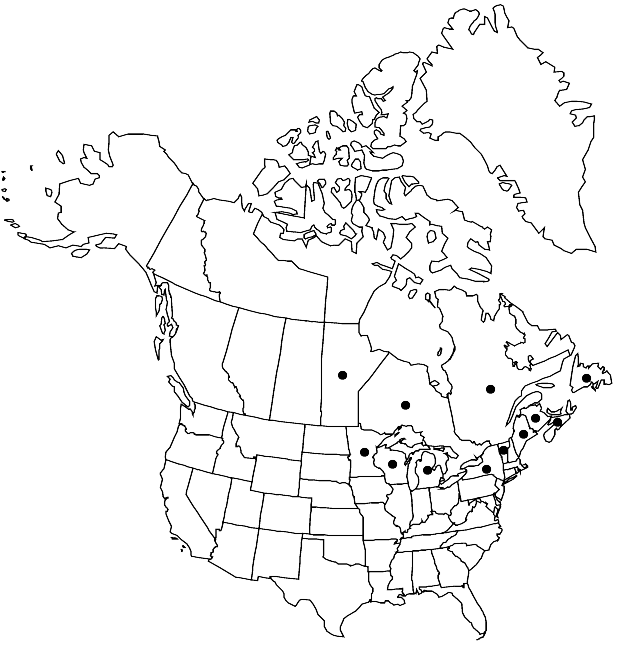Draba arabisans
Fl. Bor.-Amer. 2: 28. 1803.
Perennials; (sometimes cespitose); caudex simple or branched; not scapose. Stems branched or unbranched, (0.5–)0.7–3(–4.5) dm, pubescent proximally, glabrous or pubescent distally, trichomes sessile (non-crisped), 4- or 5-rayed, stellate, or subpectinate, 0.07–0.4 mm. Basal leaves rosulate; petiolate; petiole base and margin sparsely ciliate, (trichomes simple and 2-rayed, 0.2–0.8 mm); blade oblanceolate to spatulate or linear-oblanceolate, 1–3.8(–5) cm × 2–5(–8) mm, margins dentate or denticulate, surfaces pubescent with sessile, non-crisped, 4- or 5-rayed, stellate trichomes, 0.07–0.5mm, (some rays branched, appearing 2–12-rayed, midvein obscure abaxially). Cauline leaves (2 or) 3–10(–13); sessile; blade ovate to oblong, margins dentate to subentire, surfaces pubescent as basal. Racemes 5–18(–25)-flowered, ebracteate, elongated in fruit; rachis not flexuous, glabrous or pubescent as stem. Fruiting pedicels divaricate-ascending to suberect, straight or slightly curved, (3–)4–10(–13) mm, glabrous or pubescent as stem. Flowers: sepals oblong, 1.7–2.5 mm, pubescent, trichomes short-stalked, 3- or 4-rayed; petals white, broadly obovate, 3.5–5 × 1.5–2.5 mm; anthers ovate, 0.4–0.5 mm. Fruits ovate to lanceolate or linear-lanceolate, usually slightly twisted, rarely plane, flattened, 5–11(–14) × 2–3.5 mm; valves usually glabrous, rarely pubescent, trichomes 3- or 4-rayed, 0.07–0.2 mm; ovules 20–28(–32) per ovary; style (0.2–)0.4–1 mm. Seeds oblong, 0.8–1.1 × 0.6–0.8 mm. 2n = 96.
Phenology: Flowering Jun–Aug.
Habitat: Rock outcrops and talus (usually limestone or dolomite), open woods, rocky shores
Elevation: 0-300 m
Distribution

Man., N.B., Nfld. and Labr. (Nfld.), N.S., Ont., Que., Maine, Mich., Minn., N.Y., Vt., Wis.
Discussion
Draba arabisans is often confused with D. glabella (2n = 80); it is easily distinguished by having sessile (versus short-stalked) stellate trichomes on abaxial leaf blade surfaces and longer styles (0.2–)0.4–1 [versus 0.1–0.2(–0.4)] mm. Both species have twisted and plane fruits; D. arabisans has mostly twisted fruits; D. glabella has predominantly plane fruits. The complete absence of simple trichomes proximally on stems of D. arabisans can be a useful feature separating it from D. glabella, which often has at least some simple trichomes on the proximal half of the stem.
Draba arabis Persoon is an illegitimate name, sometimes found in synonymy with D. arabisans.
Selected References
None.